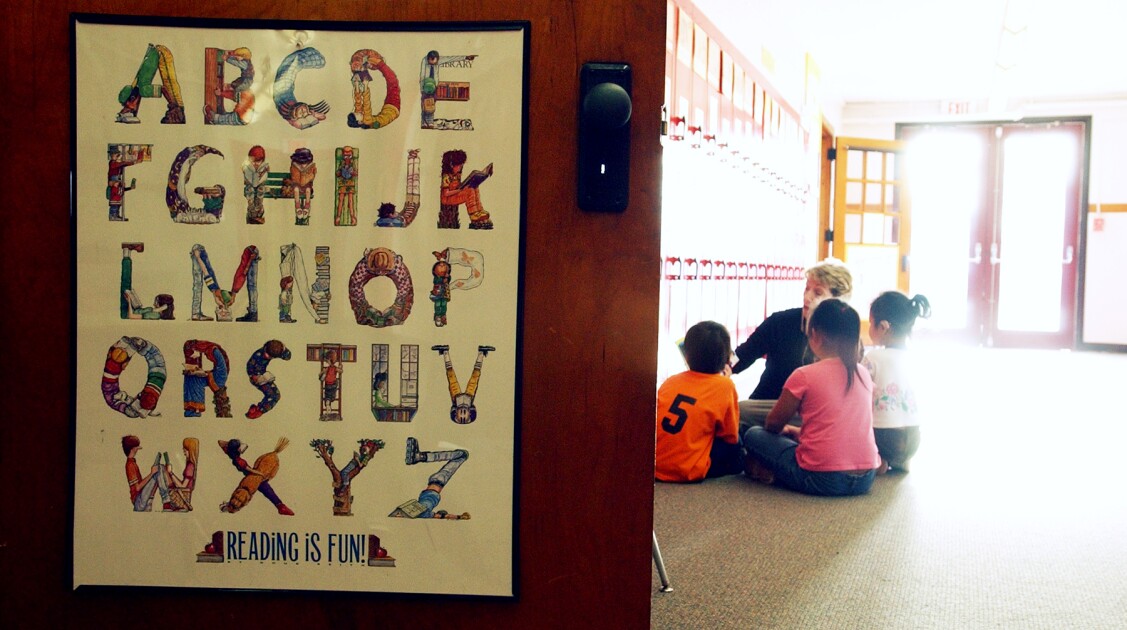Here’s a challenge for you: Without looking, write down the vision of your school or district. You may not be able to write it down verbatim, but can you at least identify and articulate the main points in your own words?
My principal and I gave this challenge to a group of educators at a conference last summer in a session we taught on how to make meaningful change in your own school. Of the approximately 200 educators from across the country who attended our session, less than 10 percent could confidently meet this challenge.
But what we found to be even more alarming was the general agreement that many of the official vision statements were relatively meaningless. They were full of broad and ambiguous statements that were great for hanging on the wall, but pretty ineffective in terms of motivating people to strive for a common goal of excellence. Here’s one such example: “To create 21st-century learners through the development and delivery of a diverse set of strategic teaching and learning strategies in a way that is targeted to enhance the individual growth pathway for each learner so that learning outcomes are maximized for the long-term benefit of the communities we serve.” While this type of vision statement might win an eduspeak award, it certainly doesn’t elicit inspiration and a common purpose.
If you spend time researching the fundamental ingredients of any successful organization, whether it’s a business, a nonprofit, or a school, one thing that immediately becomes apparent is a deeply ingrained shared vision. A few examples:
•Habitat for Humanity: “A world where everyone has a decent place to live.”
•Disney: “To make people happy.”
•Google: “To organize the world’s information and make it universally accessible and useful.”
•Cleveland Heights-University Heights City School District (Ohio): “Preparing All Students for Success in A Global Economy (P.A.S.S.A.G.E.)”
Not only do each of these examples contain details about the future state the organization can have on the world, but each is also clear and concise enough that everyone in these organizations can use the statement to help focus their work on achieving that envisioned future state. Simply put, words have power. And a powerful vision statement is one that gives everyone in the organization a vivid sense of purpose in the work they do. This is why, in my view, any school or district that is really serious about changing the status quo for its students has to start with a thorough evaluation of its core beliefs and how those may be articulated in a clear mission and vision statement.
But as powerful as words may be, they will remain only words unless they embody the actions of every stakeholder who belongs to the learning community, especially the students. So my second challenge is for you to ask yourself the following question: Does your vision pass the red face test? In other words, if you gave your vision to an outside observer and asked her to tour your school for a day, could she identify examples that match the words in the statement to the actions of members of your learning community? Or would she come up blank, leaving you embarrassed with a red face?
If you pass this test, then you are indeed on the way to creating a culture of shared purpose—a culture where common goals and common language can be the catalyst that closes the gap between the current reality for the school and the future state all stakeholders desire.
If you spend time researching the fundamental ingredients of any successful organization, one thing that immediately becomes apparent is a deeply ingrained shared vision."
I believe organizations that fail to recognize the essential nature of a shared vision are doomed to remain stuck in the status quo. Leaders of such organizations may try to demand excellence through policy, procedures, or mandates, but unless there is an inherent buy-in throughout all aspects of the organization, such excellence will be fleeting. Think of an example of a top-down mandate that, while well intentioned, was ultimately ineffective. Whether originating from the government, district leadership, or a school administrator, imposing one-size-fits-all conditions on an organization often ignores the true capacity of that organization: its people.
Simply put, excellence comes not from silver bullets, but from sharing a passion for a common goal and taking advantage of the ideas and input of the people doing the work to achieve that common goal. Schools that have successfully embarked on journeys toward educational excellence are the ones that have smartly aligned all stakeholders —parents, teachers, administrators, community members, and students—to a shared purpose and then relentlessly enabled conditions for open, candid collaboration to drive innovation.
In the book Collective Genius: The Art and Practice of Leading Innovation, the authors state that purpose is often misunderstood. They write, “It’s not what a group does, but why it does what it does … the question every group should ask itself: If we disappeared today, how would the world be different tomorrow?” If we enable educators to truly find their purpose in the work they do—i.e. their True North—with structures that help them connect that purpose with a larger organization-wide goal, then we have created a potent tool for driving innovative change that our students and communities deserve.
While it may be a naive oversimplification, I honestly believe that a shared vision is the primary ingredient in the secret sauce to drive innovation in our schools. If what you do is clearly aligned with your inner purpose, then you will be passionate about the work you do. You will eagerly collaborate with others, you will find ways to share ideas and resources to help yourself and others reach your common goals, and you will have a relentless focus on continuous improvement and innovation.
What if this common purpose, articulated in a genuine shared vision, was the ethos of every school? I believe it can be. Who’s up for the challenge?






